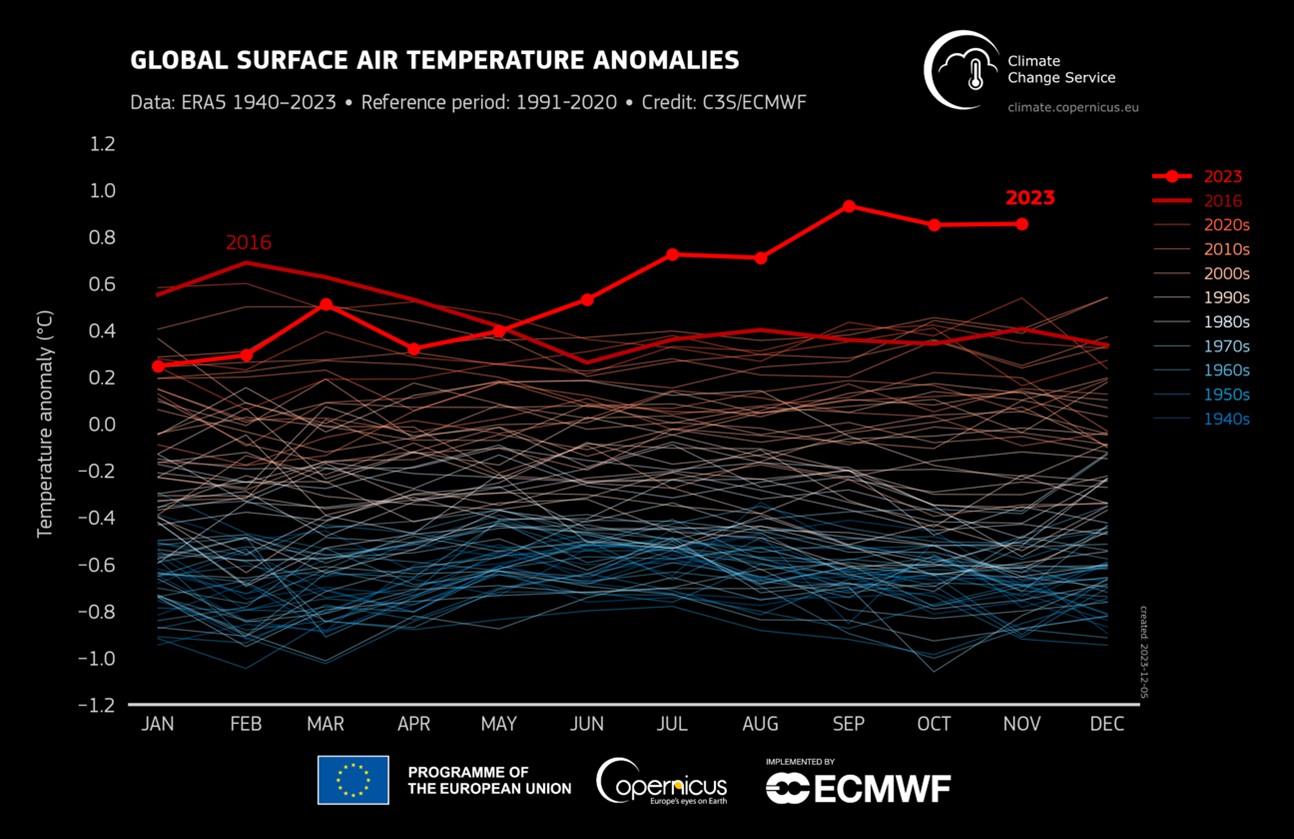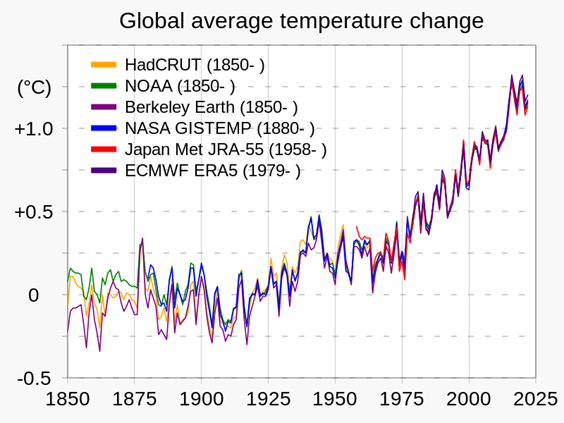2023: The hottest year ever
If you're like most who visit our site or use Airspool, you're probably focused on thelargest electrical expense for many families: heating and cooling. And, although we don't usually talk about this, you’re actually doing good for the environment while you’re doing well in gaining these savings. That’s important, since we just closed out the hottest year ever for our planet. But neither the NOAA or the European Copernicus Climate Change Service have even finalized 2023, so how can this be already stated? Because it’s not even close.

This is compiled by the European Union. A yearly summary from our own NOAA will be out soon, but check out the NOAA data for each month this year so far . It’s of course in line with the EU one, since there’s only one atmosphere.
Okay, so it’s warming. How do we know this is a result of man-made carbon emission and not from volcanic activity? It’s a good question.
Some background info
In the 1850s and 1860s, a curious English bloke named John Tyndall wanted to know what trapped the radiant heat on earth at nighttime. From his perspective as a physicist and a chemist, the earth’s heat should escape the surface of the planet every night. He speculated it was something in the air or upper atmosphere, but what? He conducted experiments chemically creating pure nitrogen (around 78% of air), pure oxygen (around 21% of air), and pure carbon dioxide (around .04% of air), and putting them into a tube, and monitoring how much infrared radiation (heat) transferred through to the tube. Basically, all of the heat transferred through the oxygen and nitrogen, but carbon dioxide (CO2) actually absorbed it. So, this gave him a basic understanding of the earth’s atmosphere. No one much worried about CO2 until a scientist named Charles Keeling dedicated himself to the study of its effect in 1950s. He and other scientists started monitoring CO2 content in the air in Alaska, Hawaii, and the South Pole, and studying glacier ice bubbles for historic CO2 levels. These bubbles were dated using Carbon-14 dating and other means for accuracy. He then graphed all of this basically from the beginning of time until the 1980s, at which time his son Ralph took over to spearhead the project (along with others).
Here's from 3 weeks ago. But now, I’m noting it’s already increased to 422.85 ppm.

So, you can see that not much happened until around 1900. In fact, the at`mosphere was at around 250 ppm from 800 million BC until the 1850s when it started to creep up every so slowly. And, this was the time of the industrial revolution. The increase was slow until it starts leaning toward hyperbolic. Prehistoric temperatures can also be discerned, and, like the measured temperature below, the correlation of CO2 increases to temperature increases (taking into account the variations of daily/monthly/annual weather) is basically 1-to-1.

Draw your own conclusions, but what scares me is that this now seems to be accelerating. The good news? Yes, solar will win not because most people are by-and-large embracing it to stave off this global warming, but because, yes, it’s helping them, and helping you, live a better, more affordable life. It’s now less costly to generate a kWh from solar than coal, all things considered, and it’ll only be more appealing over time.
